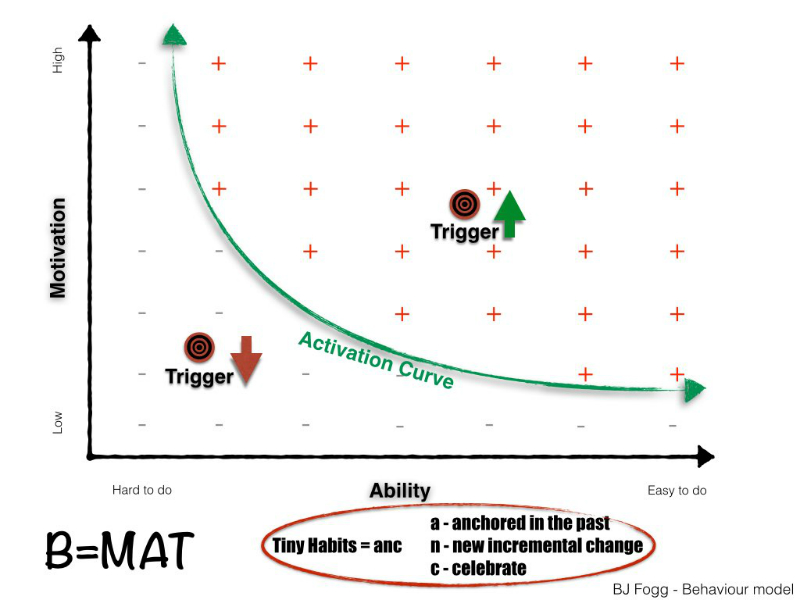
BJ Fogg has developed a behavior change model that is a useful point of reference to help organizations make the changes required to be effective employers of choice for generation Y and generation Z.
The equation B= MAT summarizes the model.
For behavior change three things need to happen at the same time, there needs to be motivation to change, there needs to be ability to change, and there needs to be a trigger to initiate change.
The response to the trigger can be positive or negative depending on the other two factors. If the motivation to change is high response to the trigger will result in change. If motivation to change is low then the response to the trigger will be negative with no behavior change. Similarly, if the ability to change is easy to do or hard to do the response to the trigger will be positive resulting in change, or negative with the status quo remaining in place. The sweet spot between motivation to change and ability to change generates a curve the model calls the activation curve. Above the curve the trigger results in change, below the curve nothing happens.
In order to move a situation from below to above the activation curve the model talks about using tiny habits to bring about the shift. Tiny habits require three things:
- habits must be anchored in the past,
- must have a new but only incremental change,
- each effective experience of change, however small, needs to be celebrated.
The key to success in this model is the use of the word TINY. It’s not about giant leaps forward but rather more effective, and simply implemented, baby steps.
Many organizations find themselves in a place where they have to change processes, culture, and the way things have always been done. They need to do this in order to incorporate a new generation of employees with new habits, new views of normality, and new ways of being effectively motivated. Trying to do this with massive projects and change processes is exhausting and disorientates the organization, causing it to lose its strategic focus.
Assess your organizations ability to move forward, and respond to the trigger of a new generation of staff, by asking if you have the motivation to change and if you have the ability to change. Depending on your responses you may need to initiate new tiny habits. These new habits should be anchored in who you are, they should only require small changes that happen often rather then significant changes that happen rarely. And, a new discipline of celebration should be incorporated into organizational culture acknowledging when effective new habits are in place and exercised.
Organizations that manage to effectively integrate this new pool of human capital will be best positioned to see strategic success in the New World of Work.
http://www.behaviormodel.org


